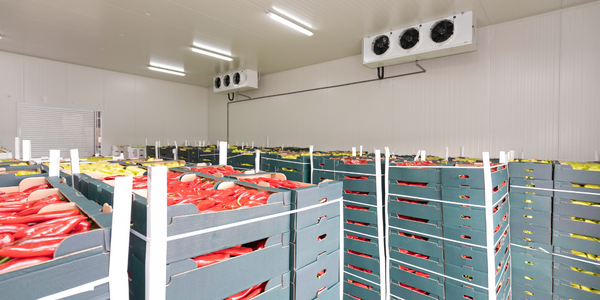CalArk Puts the Brakes on Competitive and Economic Pressures
Company Size
200-1,000
Region
- America
Country
- Mexico
- United States
Product
- Manhattan Carrier
- Driver&Load
- Drop&Swap
- Fuel&Route
- Profit Analyzer
Tech Stack
- Real-Time Optimization
- Driver Management Software
- Load Assignment Algorithms
Implementation Scale
- Enterprise-wide Deployment
Impact Metrics
- Cost Savings
- Customer Satisfaction
- Productivity Improvements
Technology Category
- Functional Applications - Fleet Management Systems (FMS)
- Functional Applications - Remote Monitoring & Control Systems
Applicable Industries
- Transportation
Applicable Functions
- Business Operation
- Logistics & Transportation
Use Cases
- Fleet Management
- Predictive Maintenance
- Remote Asset Management
Services
- Software Design & Engineering Services
- System Integration
About The Customer
Since the mid-1970s, family-owned CalArk International has built a strong reputation for on-time, reliable service as a for-hire truckload carrier. Based in Little Rock, Arkansas with terminals throughout the United States and Mexico, CalArk is a mid-sized company that operates a fleet of 600 trucks, including dry van and refrigerated trailers. The company has maintained its growth and success by recruiting superior employees and leveraging the latest technology. CalArk sought a real-time carrier management solution to automatically optimize driver-to-load assignments in 2004, implementing Manhattan Carrier from Manhattan Associates.
The Challenge
During the recession, larger trucking companies became serious competitors to middle market leaders, such as CalArk, vying for any and all for-hire carrier business. In response, CalArk needed to sharpen its operations to retain market share, maximize driver utilization and maintain profitability, all with a decreased fleet size. Keeping profit margins and service levels up with a reduced fleet wasn’t the only challenge CalArk faced. Larger trucking companies were dipping into the mid-sized market trying to find new freight lanes. Determined to hold on to its customer base, CalArk upgraded to Manhattan Carrier 2010.
The Solution
To meet these competitive challenges, CalArk opted to upgrade Manhattan Carrier. The solution’s 2010 release includes En-Route Assignment (ERA), which combines the matching functionality of the Driver&Load module, and the efficiency evaluation capabilities of Drop&Swap. ERA merges two highly functional Manhattan Carrier modules: Driver&Load helps CalArk dispatchers look at each driver’s load assignment and attributes in real time, and matches specific drivers to the best possible load combinations. Drop&Swap improves the company’s efficiency by evaluating trucks on the road and determining optimal load swaps to eliminate empty miles, improve utilization and protect service. It also helps CalArk identify pending problems or service delays that could occur. In addition to ERA, the company also uses other Manhattan Carrier modules, including Fuel&Route to provide drivers with street-level directions and a fueling plan to reduce the overall cost for fuel, taxes, and tolls, and Profit Analyzer which assesses all factors that impact profitability and provides a P&L statement for every customer and every load.
Operational Impact
Quantitative Benefit

Case Study missing?
Start adding your own!
Register with your work email and create a new case study profile for your business.
Related Case Studies.

Case Study
Airport SCADA Systems Improve Service Levels
Modern airports are one of the busiest environments on Earth and rely on process automation equipment to ensure service operators achieve their KPIs. Increasingly airport SCADA systems are being used to control all aspects of the operation and associated facilities. This is because unplanned system downtime can cost dearly, both in terms of reduced revenues and the associated loss of customer satisfaction due to inevitable travel inconvenience and disruption.

Case Study
IoT-based Fleet Intelligence Innovation
Speed to market is precious for DRVR, a rapidly growing start-up company. With a business model dependent on reliable mobile data, managers were spending their lives trying to negotiate data roaming deals with mobile network operators in different countries. And, even then, service quality was a constant concern.

Case Study
Digitize Railway with Deutsche Bahn
To reduce maintenance costs and delay-causing failures for Deutsche Bahn. They need manual measurements by a position measurement system based on custom-made MEMS sensor clusters, which allow autonomous and continuous monitoring with wireless data transmission and long battery. They were looking for data pre-processing solution in the sensor and machine learning algorithms in the cloud so as to detect critical wear.

Case Study
Cold Chain Transportation and Refrigerated Fleet Management System
1) Create a digital connected transportation solution to retrofit cold chain trailers with real-time tracking and controls. 2) Prevent multi-million dollar losses due to theft or spoilage. 3) Deliver a digital chain-of-custody solution for door to door load monitoring and security. 4) Provide a trusted multi-fleet solution in a single application with granular data and access controls.

Case Study
Vehicle Fleet Analytics
Organizations frequently implement a maintenance strategy for their fleets of vehicles using a combination of time and usage based maintenance schedules. While effective as a whole, time and usage based schedules do not take into account driving patterns, environmental factors, and sensors currently deployed within the vehicle measuring crank voltage, ignition voltage, and acceleration, all of which have a significant influence on the overall health of the vehicle.In a typical fleet, a large percentage of road calls are related to electrical failure, with battery failure being a common cause. Battery failures result in unmet service agreement levels and costly re-adjustment of scheduled to provide replacement vehicles. To reduce the impact of unplanned maintenance, the transportation logistics company was interested in a trial of C3 Vehicle Fleet Analytics.

Case Study
3M Gains Real-Time Insight with Cloud Solution
The company has a long track record of innovative technology solutions. For example, 3M helps its customers optimize parking operations by automating fee collection and other processes. To improve support for this rapidly expanding segment, 3M needed to automate its own data collection and reporting. The company had recently purchased the assets of parking, tolling, and automatic license plate reader businesses, and required better insight into these acquisitions. Chad Reed, Global Business Manager for 3M Parking Systems, says, “With thousands of installations across the world, we couldn’t keep track of our software and hardware deployments, which made it difficult to understand our market penetration.” 3M wanted a tracking application that sales staff could use to get real-time information about the type and location of 3M products in parking lots and garages. So that it could be used on-site with potential customers, the solution would have to provide access to data anytime, anywhere, and from an array of mobile devices. Jason Fox, Mobile Application Architect at 3M, upped the ante by volunteering to deliver the new app in one weekend. For Fox and his team, these requirements meant turning to the cloud instead of an on-premises datacenter. “My first thought was to go directly to the cloud because we needed to provide access not only to our salespeople, but to resellers who didn’t have access to our internal network,” says Fox. “The cloud just seemed like a logical choice.”


